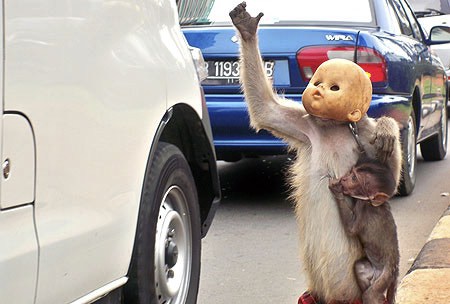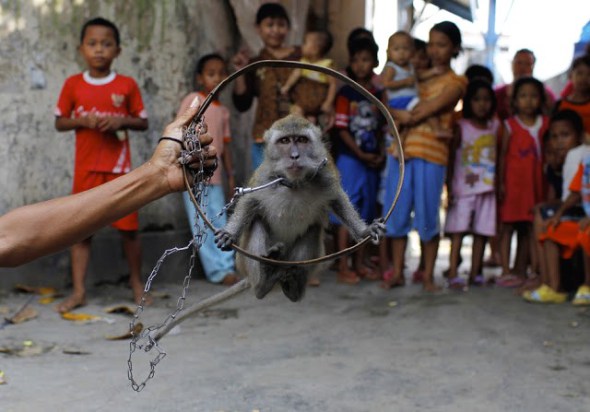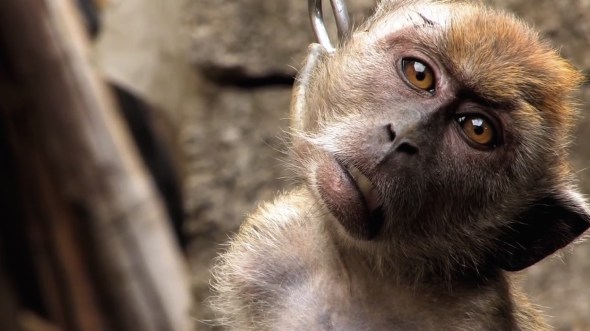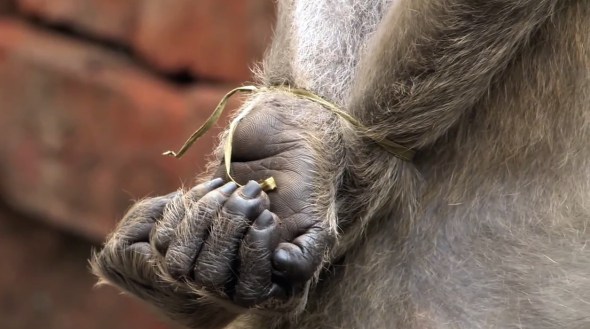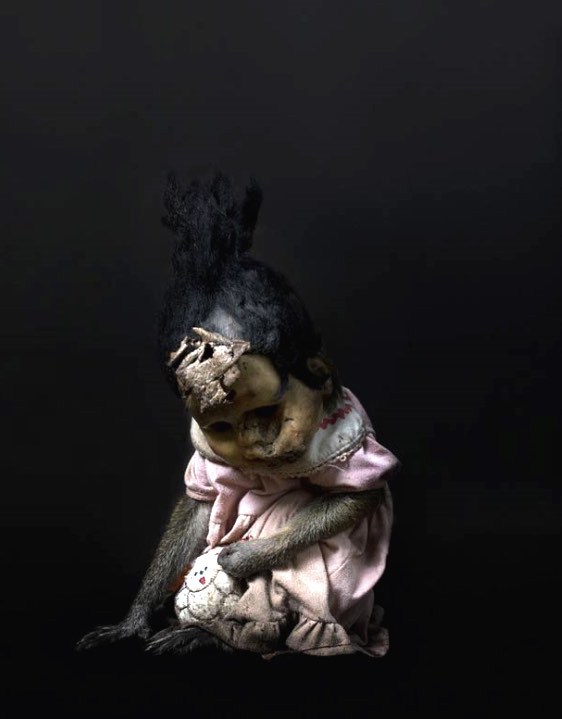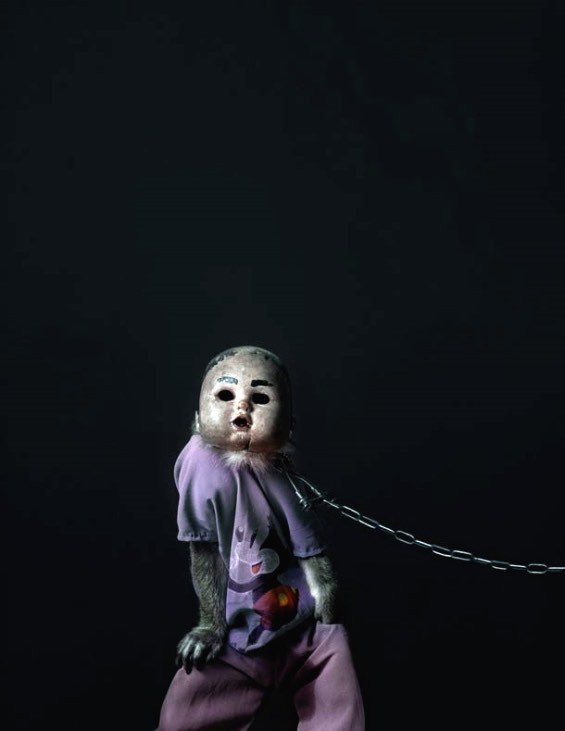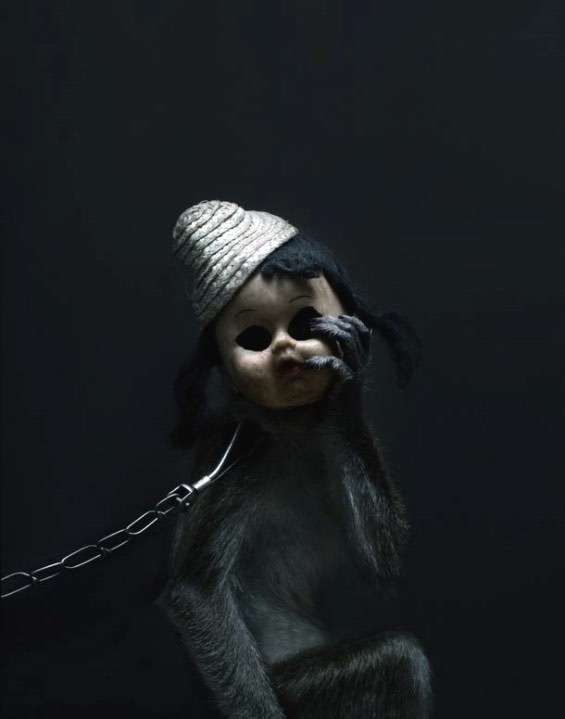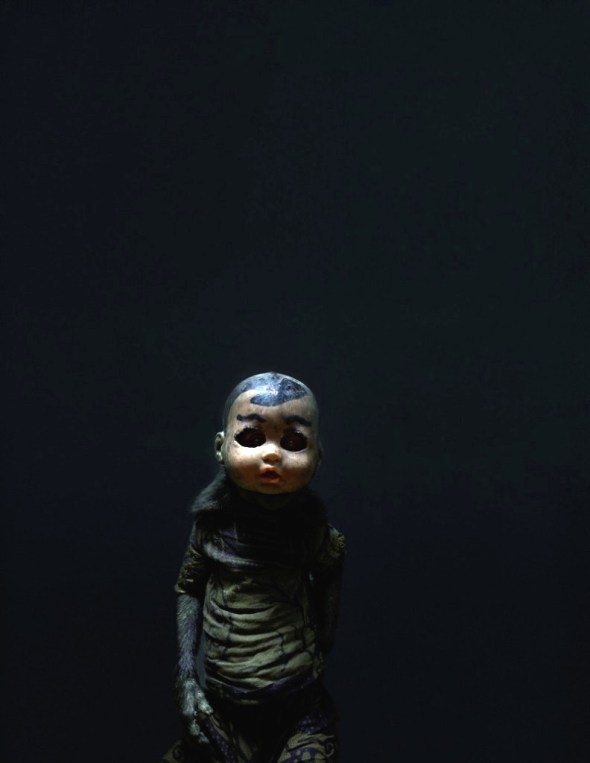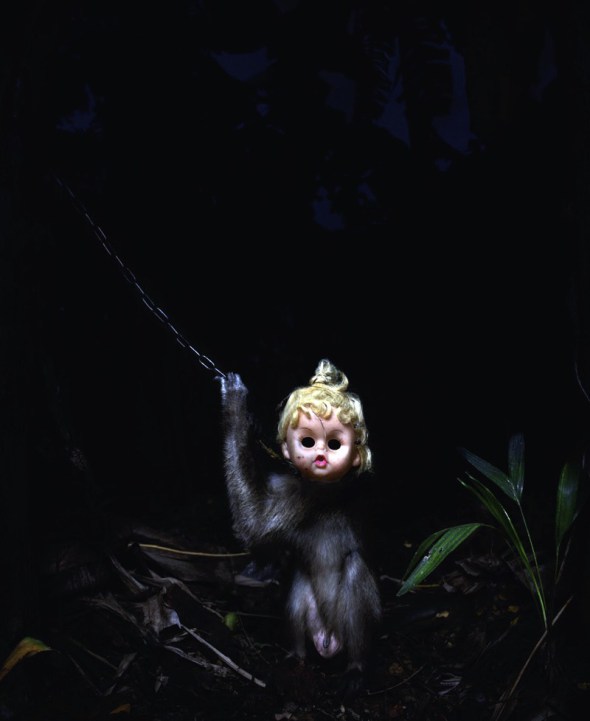Doll Face Dancing Monkeys Of Indonesia
Doll Face Dancing Monkeys Of Indonesia
Special Report: dressed in grotesque costumes, plastic masks and acrylic wigs, the exhausted and severely malnourished dancing monkeys spend every day in the hot sun as they dance on command on the edge of busy roads, choking on putrid traffic fumes.
Monkey handlers usually lay in the shade a few meters away and constantly wrench on the heavy chain around their monkey’s neck, demanding non-stop performances. Forty percent of monkeys die during training alone.
Known as topeng monyet, a five year battle took place to have performing monkeys banned in Jakarta and that same battle now exists for other locations across Indonesia.
The illegal animal trade is a multi-million-dollar business and every year over 3,000 Macaque monkeys are estimated to be poached from the Sumatran forest, tortured and condemned to a life of painful misery. The monkeys are poached after the mother is wounded and the baby is prised off the dying mother’s body. Most macaque babies are used for research for international pharmaceutical groups or universities and the others are sold to become topeng monyets, performing monkeys.
Poachers are paid $2 for each monkey by dealers, who sell them on to street buskers in Jakarta for $5 each. A fully trained macaque can be sold for up to $135.
Listed as near-threatened, the highly social and intelligent macaque monkeys are forced to live in isolation in tiny dark wooden crates which quickly leads to serious emotional problems for each of the monkeys. In 2013 at least 150 macaques were kept in this manner in the East Jakarta slum area of South Cipinang Besar, famously known as Kampung Monyet, or Monkey Village where a majority of the residents call themselves ‘monkey masters.’
A young baby is forced to start training way before it’s body can handle such physical or mental stresses.
Monkey dancing only took off during the 1980s, to entertain poor children in villages [kampungs.] In recent years dancing monkeys began performing in city areas which quickly escalated to an industry throughout many regions in Indonesia.
Macaque training takes around four to six months, comprising of six or seven hours torture every day for the monkey to learn to walk upright and do simple tricks. Macaques who survive the training process will be forced to perform every day for between five to 10 years , depending on how soon they lose their mind and become aggressive and uncontrollable. At that point they will be sold to specialized restaurants of exotic cuisine, where they will be served as a live monkey-brains meal.
Training To Death
Cecep puts a metal ring around the neck of Toal, a male macaque with a broken arm from a previous training incident. Two ropes tether the ring to poles erected on either side of the monkey as Cecep also ties Toal’s arms behind his back while the monkey screeches in pain as his broken arm is twisted and tightly tied.
Once the monkeys have passed the hanging training and can walk upright, the handlers train them to use various toys and props, such as a toy motorcycle, for their performance. “We also train them to lift toy weights to check if they can really stand erect, if they can’t, the toy training period takes longer,” Cecep says.
Performing
As hard as the monkeys are forced to work for several hours every day, their pitiful diet consists solely of plain white rice. During performances sometimes their handlers give them pieces of fruit or snacks that passers by hand out
Each time a tourist stops to look, the monkey is ordered by its owner to walk on his hands, sit on a toy rocking horses or ride bicycles in the hope the tourist will hand over some loose change. It is important that people stop giving money to the monkeys or their handlers because doing so only encourages the practice.
Jakarta Bans Dancing Monkeys, Why Not Everywhere?
After a five year battle to shut down Jakarta’s dancing monkeys, the ban came into effect in late 2013 - but only for Jakarta! As soon as the first 11 monkeys out of 350 were confiscated from handlers in Jakarta, other handlers went into hiding or relocated to areas such as West Java where they are still operating today.
The Jakarta Animal Aid Network has been campaigning since 2009 to end the dancing monkey trade because of its ongoing cruelty. A Spokeswoman for JAAN, Femke Den Haas says the monkeys have their teeth cut out, are starved and are forced to hang upside down for hours in order for the monkey to become submissive.
According to BBC, Governor Joko Widodo made the decision to end the street performances because he wanted to save the monkeys, as well as protect humans from the diseases they may carry. Such diseases have included rabies, tuberculosis, hepatitis and the bacterial disease leptospirosis.
The original plan in 2011 was for the city government to buy back all monkeys used as street buskers for about $90 and shelter them at a one-hectare preserve at Jakarta’s Ragunan Zoo, and the handlers and caretakers would be provided vocational training to help find new jobs.
A total of 81 dancing monkeys were seized in 2011 with the thought they could be either placed into the Ragunan Zoo or simply released back into the wild. However, after suffering years of mental and physical abuse, the zoo refused all the monkeys, arguing that the dancing monkeys suffered from diseases and posed a threat to the facility’s current animal population. Yet the monkeys were not able to fend for themselves in the wild.
JAAN stepped in and offered to rehabilitate them. Fourteen macaques were put down after testing positive for tuberculosis and the remaining 67 were nursed back to health and slowly learned to socialize with other macaques; a significant step after spending much of their lives living alongside humans.
In 2012 a group of 40 dancing monkeys were confiscated by the authorities and were found to be carrying various diseases including tuberculosis, hepatitis and the bacterial disease, leptospirosis.
In 2013 an estimated 350 dancing monkeys were being forced to work as street performers in Jakarta. These heavily traumatized monkeys were no longer able to live with other primates in zoos and had no way to defend themselves in the wild.
Jakarta authorities initially intended that the monkey confiscations would begin in 2014 but were forced to act earlier because of the appalling conditions in which the monkeys are made to live.
Cruelly hung by the neck with their front legs tied behind their backs, the young Macaques are forced to stay like this for up to weeks. 40% die during the training phase.
“That is related to order on the streets as well as rabies and other sorts of diseases, that is why we want to be free of performing monkeys and why we have started this week. Most of the owners are not residents of Jakarta,” said Mr Widodo.
Haas said “All the confiscated monkeys are traumatized and require at least three months in quarantine before we can even contemplate re-releasing them into the wild and even then, it has to be in an area where there no other wild monkeys.”
“We believe the monkeys are best off on an isolated island such as the uninhabited island in Pulau Seribu, the capital’s Thousand Islands district, where the idea of a topeng monyet sanctuary could be set up,” said Hass.
Topeng monyets are still performing in the West Java cities of Bandung and Bekasi, however the local government in Bandung is preparing to also ban monkey shows.
2014 UPDATE ON DANCING MONKEYS
The ex dancing monkeys in the care of JAAN are all long tailed macaques which were rescued after Governor Jokowi banned the dancing monkeys on Jakarta streets end 2013 and are cared for in the government quarantine building in South Jakarta where a full time team is on site, including one veterinarian who is standby 24 hours a day, every single day.
The monkeys were cared for in the quarantine for three months during which ’emergency care’ was provided as they all suffered badly not only from stress and trauma, but also malnourishment and various diseases, including parasite infestation. They were skinny and scared, seeking comfort with each other.
After three months quarantine, the monkeys were moved to the land behind the quarantine building where JAAN built enclosures for them. One group at the time was formed, with the last group successfully being introduced in July 2014, totaling four successful groups.
Conclusion
Macaque monkeys have suffered enough. Ripped from their wounded mother at a tender age, then chained and tortured and made to perform idiotic tricks on command for several hours every day before being shoved back into a small dark cage. Just because the monkey is dressed into a grotesque outfit and mask designed to make it appear as an object does not remove the truth that behind every topeng monyet mask is an injured and severely abused animal who needs urgent help.
It is truly disgusting that after years of forced service the Macaque monkey ends up in the center of a dining table for people to eat his brain while he is still alive! The final betrayal by humans toward this precious breed of monkey.
Jakarta has banned topeng monyet dancing monkeys but we cannot become complacent and presume Indonesia will automatically ban it elsewhere. As we source current petitions for Indonesia’s remaining dancing monkeys we will add them to this article.
The following is a selection of professional photographs which were taken of Jakarta’s doll face dancing monkeys:
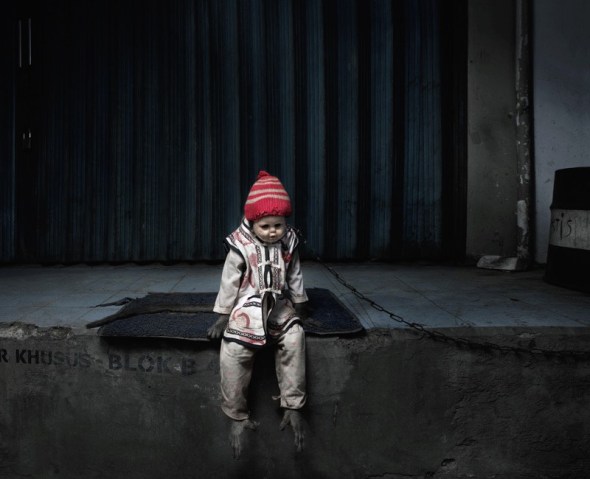 Jakarta has banned topeng monyet dancing monkeys but we cannot become complacent and presume Indonesia will automatically ban it elsewhere. As we source current petitions for Indonesia’s remaining dancing monkeys we will add them to this article.
Jakarta has banned topeng monyet dancing monkeys but we cannot become complacent and presume Indonesia will automatically ban it elsewhere. As we source current petitions for Indonesia’s remaining dancing monkeys we will add them to this article.
Thank you for reading,
Michele Brown.
info@international-animalrescue-foundation.org.uk

